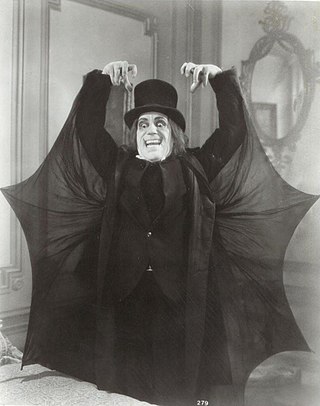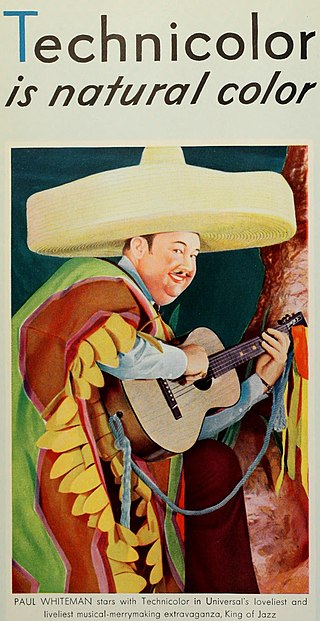Silly Symphony is an American animated series of 75 musical short films produced by Walt Disney Productions from 1929 to 1939. As the series name implies, the Silly Symphonies were originally intended as whimsical accompaniments to pieces of music. As such, the films usually did not feature continuing characters, unlike the Mickey Mouse shorts produced by Disney at the same time. The series is notable for its innovation with Technicolor and the multiplane motion picture camera, as well as its introduction of the character Donald Duck making his first appearance in the Silly Symphony cartoon The Wise Little Hen in 1934. Seven shorts won the Academy Award for Best Animated Short Film.

A lost film is a feature or short film that no longer exists in any studio archive, private collection, or public archive.

Wanderer of the Wasteland is a 1924 American silent Western film directed by Irvin Willat and starring Jack Holt, Noah Beery, and Billie Dove. It was the second feature film to be photographed entirely in two-color Technicolor.

Children of Pleasure is a 1930 American pre-Code MGM musical comedy film directed by Harry Beaumont, originally released with Technicolor sequences. It was adapted from Crane Wilbur's 1929 play, The Song Writer.

Lights of Old Broadway is a 1925 American silent drama film directed by Monta Bell, produced by William Randolph Hearst's Cosmopolitan Productions, and released by Metro-Goldwyn-Mayer. The film stars Marion Davies in a dual role and Conrad Nagel, and is an adaptation of the play The Merry Wives of Gotham by Laurence Eyre (USA). The film has color sequences using tinting, Technicolor, and the Handschiegl color process.

The Flag: A Story Inspired by the Tradition of Betsy Ross is a 1927 MGM silent fictionalized film short in two-color Technicolor, about the making of the U.S. flag by Betsy Ross. It was the first of the "Great Events" series co-produced by Technicolor and Colorcraft Pictures Inc., and distributed by Metro-Goldwyn-Mayer. The basically true story is combined with a completely fictional subplot in which a British soldier crosses enemy lines to visit his wife, a friend of Betsy Ross.

Technicolor is a series of color motion picture processes, the first version dating back to 1916, and followed by improved versions over several decades.
Climbing the Golden Stairs is an American 2-reel musical fantasy short released in 1929. It was produced in 2-color Technicolor dye-transfer process.
Buffalo Bill's Last Fight is a 1927 MGM silent fictionalized film short in two-color Technicolor. It was the second short film produced as part of Metro-Goldwyn-Mayer's "Great Events" series. As with the first film in the series, The Flag: A Story Inspired by the Tradition of Betsy Ross, this film continued the series' original intent to focus on events from American history. Ultimately, only one other short was shot which stuck to this format; the other films in the series featured historical events with a European or Asian focus.
The Lady of Victories is a 1928 MGM silent fictionalized film short in two-color Technicolor. It was the third short film produced as part of Metro-Goldwyn-Mayer's "Great Events" series.
The Czarina's Secret is a 1928 MGM silent fictionalized film short in two-color Technicolor. It was the fourth film produced as part of Metro-Goldwyn-Mayer's "Great Events" series.
The Virgin Queen is a 1928 MGM silent fictionalized film short in two-color Technicolor. It was the third short film produced as part of Metro-Goldwyn-Mayer's "Great Events" series.
Cleopatra is a 1928 MGM silent fictionalized film, shot in two-color Technicolor. It was the sixth short produced as part of Metro-Goldwyn-Mayer's "Great Events" series.
Madame du Barry is a 1928 MGM short silent fictionalized film short in two-color Technicolor. It was the eighth film produced as part of Metro-Goldwyn-Mayer's "Great Events" series, and the last to be released before the new year.
The Fire Fighters is a Mickey Mouse short animated film first released on June 20, 1930, as part of the Mickey Mouse film series. It was the nineteenth Mickey Mouse short to be produced, the fourth of that year.
Manchu Love is a 1929 American pre-code Hollywood Metro-Goldwyn-Mayer short silent historical fiction film short in two-color Technicolor. The film features a cast entirely of people of Asian descent and stars Sojin as Su Shun and Etta Lee as Empress Tzu Hsi. It was the ninth film produced as part of Metro-Goldwyn-Mayer's "Great Events" series.
Light of India is a 1929 MGM short silent film short in two-color Technicolor. It was the tenth film produced as part of Metro-Goldwyn-Mayer's "Great Events" series.
A Princess of Destiny is a 1929 MGM short silent film short in two-color Technicolor. It was the eleventh and penultimate film produced as part of Metro-Goldwyn-Mayer's "Great Events" series.
Frontier Romance is a 1929 MGM short silent film short in two-color Technicolor. It was the twelfth and final film produced as part of Metro-Goldwyn-Mayer's "Great Events" series. A romantic historical drama, the film depicts George Rogers Clark and other American colonists as they interact with Native American tribespeople.





